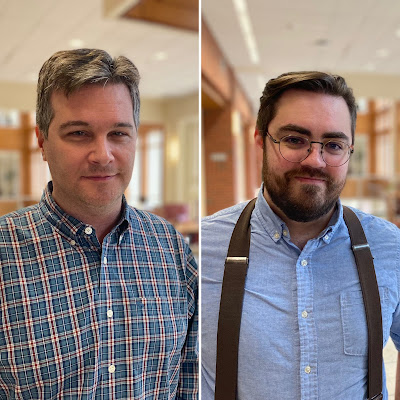Interactive testing: Center studies effect of wireless technology on medical devices

By April Wilkerson
April is a reporter in Oklahoma City. Contact her at 278-2849.
Posted: Tuesday, August 17, 2010
Hank Grant, Ph.D., director of The Wireless EMC Center at the University of Oklahoma, demonstrates a testing process for medical devices and wireless technology. (Maike Sabolich)
NORMAN – The number of cell phones, wireless systems and emitters operating at any given moment is staggering.
But it’s the interaction of those devices – such as a cell phone frequency with a piece of medical equipment or a defibrillator – that will keep a University of Oklahoma center busy for years to come.
The Center for the Study of Wireless Electromagnetic Compatibility at OU was formed in 1994 at the request of the cell phone industry, said Hank Grant, Ph.D., director of the center and OU industrial engineering professor. Cell phone technology was just taking off and there were early problems between cell phones and pacemakers. In the years since, the center’s work has spanned automotives, gas stations and aviation, and it is again largely focused on the effect of wireless technology on medical devices.
The technological world is changing fast, and companies want to know the effect of their devices before they ever hit the market, Grant said. Fortunately, any problems are usually easily remedied with a bit of redesign, he said.
“We’re in a wireless world – when you think about the number of devices operating simultaneously, it’s incredible,” Grant said. “And we haven’t even seen the beginning yet. Devices will only get more intelligent and more linked together.”
Early work
The Wireless EMC Center’s first study was the effect of all known cell phones on all pacemakers on the market. At that time, it was possible for a pacemaker to mistake a cell phone signal for a heartbeat, Grant said.
“When you turn your phone on, it sends a pulse a second for a few seconds to connect with the base stations, and pacemakers sometimes mistook that for a heartbeat and tried to pace it,” he said. “Fortunately, through some electronics, we were able to filter all that radiation from a cell phone, and pacemakers today are perfectly safe.”
After the pacemaker study, the center looked at defibrillators and hearing aids. Hearing aids are a particular challenge because they are much less regulated than other medical devices, and their quality varies according to cost, Grant said. The center developed a standard of testing and rating system that helps people find a hearing aid that works for them and matches the cell phone they use.
Because of the way electronics are arranged in hearing aids, they can pick up extraneous radio-frequency transmissions, Grant said. A custom-made hearing aid is geared toward the shape of a person’s ear, so its electronics fit in the space available.
“That orientation affects their susceptibility, so it makes it a much harder problem,” Grant said. “But generally speaking, you can find a match between most hearing aids and some type of cell phone.”
The center also studied what has become urban legend – that cell phone use while pumping gas can cause a spark and start a fire or explosion. OU researchers found no documented cases of that happening, Grant said, and he describes its likelihood as less than all members of the Beatles reuniting for a tour. That doesn’t stop gas company legal counsels from putting warning signs on gas pumps, but Grant doesn’t have any worries.
The perfect storm would have to exist – a pool of gas with the right mix of oxygen, a phone in transmission being dropped, and the battery coming out and discharging to create a spark.
“You’re more likely to get a spark from sliding across the seat and getting static electricity,” he said. “It’s one of those scientific things where it’s extremely difficult to prove that it would never happen. But we can say that it’s really remote.”
Ongoing studies
The Wireless EMC Center performs two kinds of studies – one focused on individual testing of a device’s possible interactions with wireless technology, and the other focused on industry-wide studies of all models of the same product.
The center also looks at all types of wireless technologies, such as the security panels shoppers often walk through at the doorway of a store, metal detectors in airports, and radio-frequency identification tags that can be used to find inventory in a large warehouse.
Grant said their next major area of focus is “wireless coexistence,” which looks at the simultaneous effect of several emission technologies. In addition, the medical community is increasing its use of telemetry devices that transmit information about a patient at home back to the doctor. In the future, medical devices will increasingly use technology for the repair of prosthetic devices and parts of the nervous system.
The work of the Wireless EMC Center is usually done early in the design phase of a product, and 99.9 percent of the time, any problems are resolvable, Grant said.
Center funding and researchers
The center performs about $400,000 worth of research every year, Grant said, and he hopes to grow it to $1.5 million in the next couple of years. Even though most of the money comes directly from companies, the center’s staff is careful to keep those industries at arm’s length to remain unbiased, he said.
“They don’t dictate the details of the study,” he said. “As long as we’re working on problems of significance to industry, they’re satisfied, but they don’t tell us what to do. Otherwise, it would question our credibility.”
Other OU faculty members join Grant on the work of the center, along with engineering students.
That allows students an opportunity to work on today’s technologies and possible problems, said Tom Landers, Ph.D., dean of the College of Engineering.
“It’s a very relevant applied research field where they can put their learning to work to deal with real-world problems,” he said.


